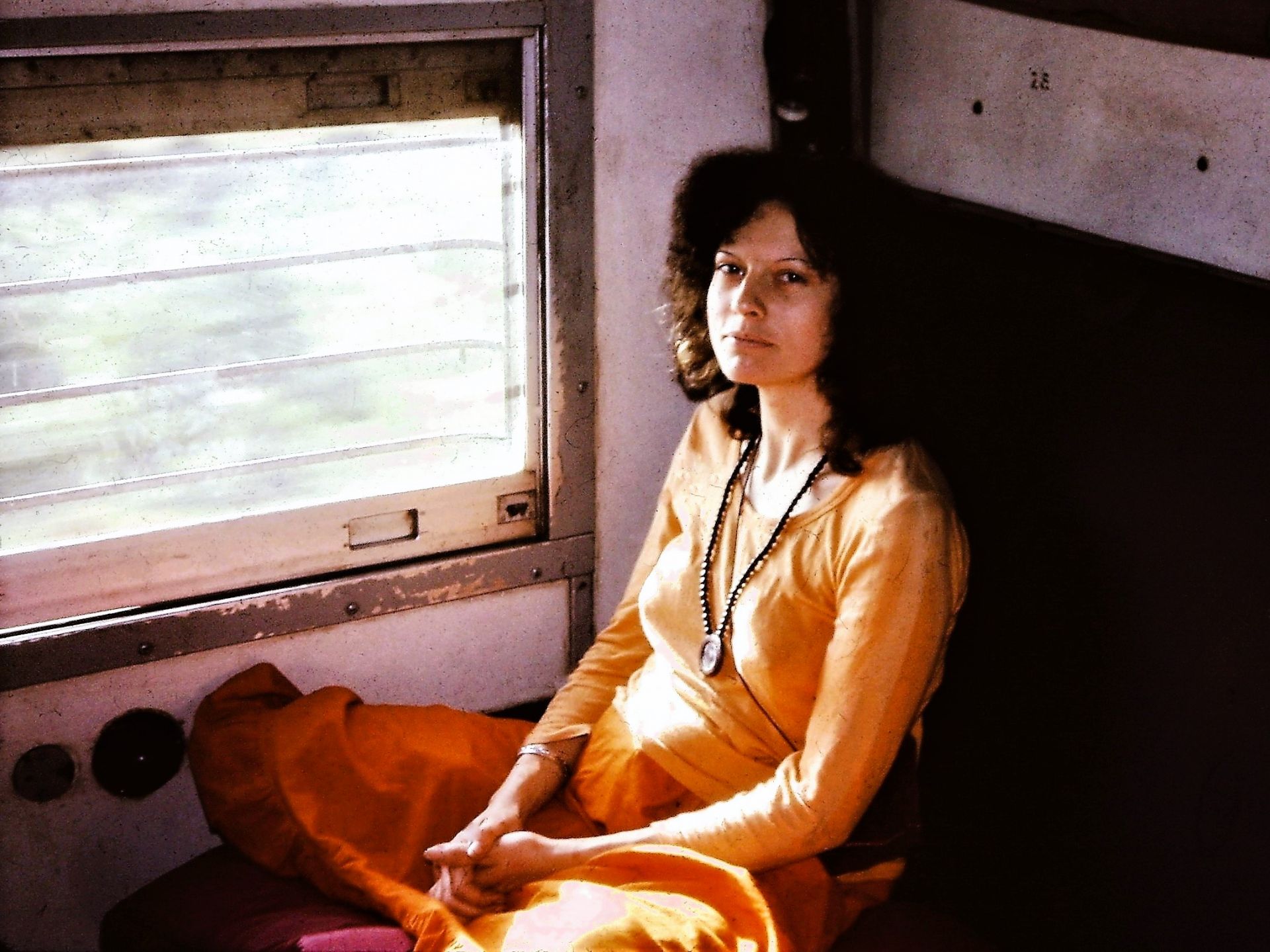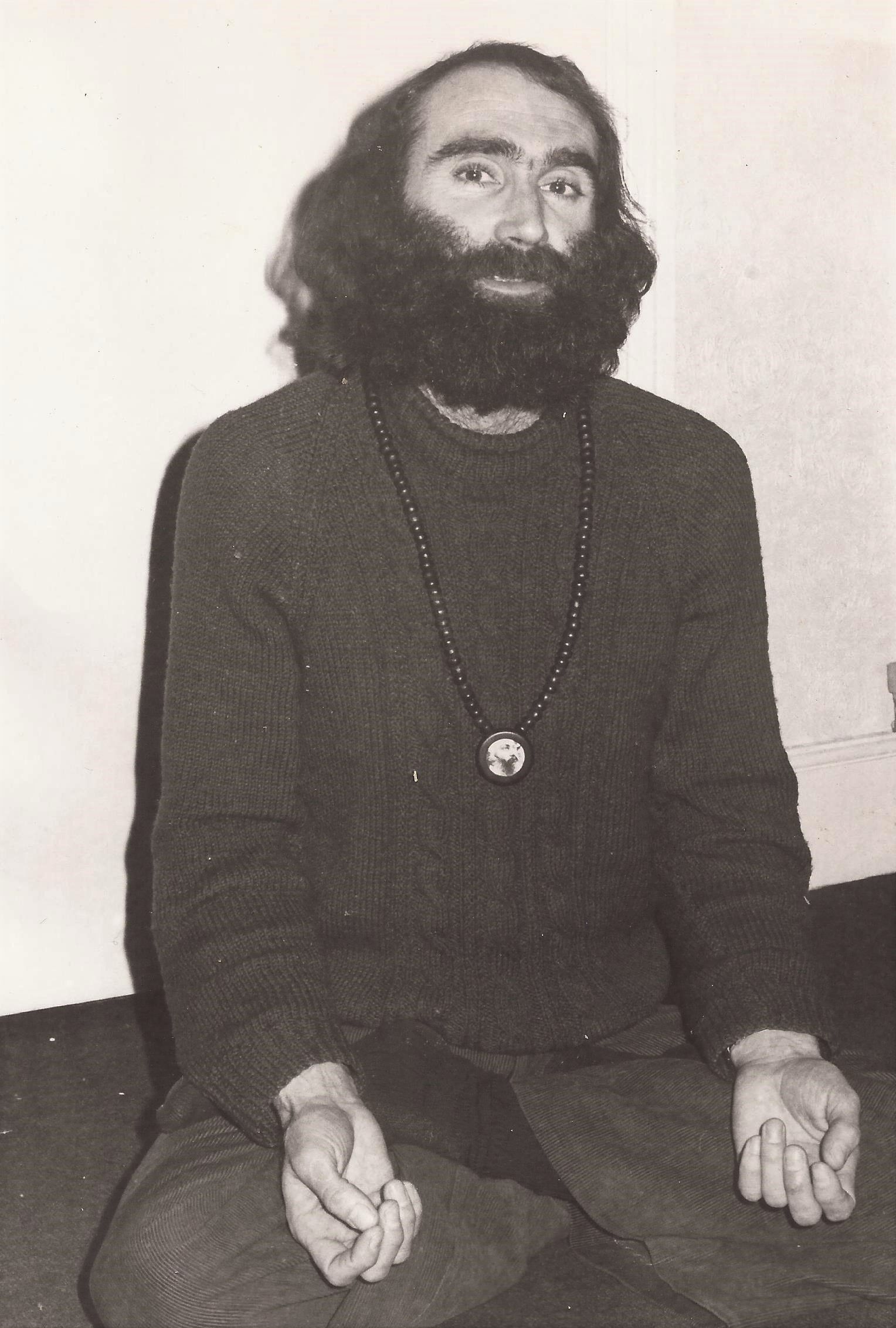
|
Travels in India On October 4th, 1977, Mary and I flew to Bombay, or Mumbai as it is now called. We spent a couple of days there staying at a cheap hotel situated a short walk from the Gateway to India. When I say cheap, I mean cheap --- the cost was the equivalent of about 20 pence a night. It didn’t have a bed, just a mattress on the floor. Both Mary and I wanted to do this as cheaply as possible so that we could stay as long as we liked and, in those days, I didn’t mind ‘roughing it’. Many years later I was staying at the Dorchester Hotel on Park Lane in London, and a vision of our room in Bombay came into my mind. I remember thinking that I had come a long way since then, in all senses of the word. My first meal in India was memorable. I’d eaten Indian food previously in England, but I didn’t like it too spicy, and having just arrived I thought I would have something plain. I ordered some tomato soup thinking that would be safe. Mary had the same. When it arrived, she started straight away, and I followed a few seconds later. When I did, the first spoonful nearly blew the roof of my mouth off, it was so hot and spicy. It was then I realised how much she liked spicy food. Our plan was to do our travelling and go to the places that we wanted to see first, and then visit the Ashram. The first leg of our journey was an 800-mile, 24-hour train journey to New Delhi. We went first-class in a carriage with bunks, as it wasn’t expensive, and I had seen the conditions of travel in the ordinary class. Although the first-class carriage wasn't exactly luxury nor anything special by today's standards, it was certainly an improvement on the standard class, as we had a compartment to ourselves with room to move around and a bed to sleep in. A few years later I was to return to India and by that time things had improved somewhat, although the standard class still had people crammed into the corridors and riding on the roof.  We spent a couple of days in New Delhi then moved on to Delhi. We didn’t really make the most of our visit and didn’t see some of the sights that we really should have seen. That was a lesson I was to learn for later life: Always make the most of any situation that you find yourself in. I feel that I missed some good opportunities. It was a time of spiritual discovery for me and, by the time we reached Delhi, I had become quite placid and easy-going until that is, I needed to purchase our next railway tickets. We wanted to go to Agra, as no trip to India would be complete without a visit to the Taj Mahal. We were directed to the appropriate queue and prepared ourselves for a long and arduous wait. It was hours before we got to the ticket window, however, once there, we were told that we needed to be upstairs where we joined another queue. Several hours later, we got to the front of the line to be told we needed to be downstairs instead! My calm evaporated. I found the biggest office and marched into it. I have never been one to lose my temper or shout. Instead, I fixed my eyes on the person behind the desk. and politely expressed my total displeasure at the events of the previous few hours. I was offered a chair while someone looked into my complaint. Many years later when I was leaving the Territorial Army, I was being dined out by my officers. It is tradition for each one to stand up and say nice things and relate a few stories about you. One officer stood up and said that, as long as he had known me, he had never heard me shout or even raise my voice, but I would fix someone with my eyes, and they would know that I wasn’t happy. That was what I did in Delhi, and shortly, a member of the staff appeared with two tickets to Agra. We spent a couple of days in Agra and the Taj was certainly well worth the effort, although I missed the opportunity to visit the Red Fort. I travelled to Agra again in 2010 and made amends for that omission. I also revisited the Taj. Security measures had been intensified by then and photographs were no longer permitted inside the mausoleum. To my mind, it is one of the most beautiful buildings in the world.  The Taj was built by the Mughal Emperor Shah Jahan as a mausoleum for his beloved wife Mumtaz Mahal who died in 1631. It is known as the Symbol of Eternal Love. Its beauty is breathtaking, although the cost to construct it nearly bankrupted the nation. For anyone who loves history and architecture, a visit is a must. One thing that sticks in my mind about India is the extreme poverty. On many occasions, as we walked through the streets, we were surrounded by children, or mothers with babes-in-arms, with outstretched hands. One couldn’t give something to one or all the others would want the same and other children would suddenly appear from nowhere. We found that we had to detach ourselves from those situations. Many years later, in 2010, I returned to India with my friend Anne. We were doing a tour across the Himalayas which began in China, then took us through Tibet, Nepal, and India, spending a few days in each country. In India, we took the train to Agra, and Anne found it extremely difficult to cope emotionally with the beggar children living on the station platform there. Poverty and hardship is not a problem confined to India, of course. One of my enduring memories of Peru was in the city of Cusco, which I visited on my way to Machu Picchu. A young boy was trying to sell a picture in the city’s main square. One is expected to haggle there and I always want to get the best price I can, so I commenced to beat him down considerably from the price he asked originally. We finally agreed on a price so I paid him and took my picture. As I continued to walk around the square, I noticed an older boy giving him what appeared to be a chastisement for accepting such a low price. So, I went back and gave him a few more coins. I can still see the look of disbelief on their faces. I was so pleased that I did that, as I think about the boy quite regularly since the picture hangs in my kitchen/dining area today. But, back to the story of my first visit to India. Mary and I returned to Bombay and then went on to Poona. As I’ve said, we normally travelled first class in India, but since this was a relatively short journey, we felt that we wanted to experience travelling as the locals do in a regular class carriage. There were so many people getting on the train that we barely managed to get inside one of the carriages, and it was so tightly packed that we were jammed up against a wall in such a way that we couldn’t even sit on the floor but had to stand, pressed together by other people, for the entire three-hour trip. We were now on the final leg of our journey and the reason for our trip to India, which was to visit the Ashram of Bhagwan Shree Rajneesh. I had read a couple of Bhagwan's books and heard him speak on cassette. There seemed to be something extremely spiritual about him and it was possible to have an audience with him when you arrived at the Ashram and then again when you were leaving. On arrival, we visited the Ashram office and arranged our audience. The nice thing about him was a feeling of acceptance and how he incorporated all religions and philosophies into his teachings. I feel that that period was another significant stage in my development as a person. Initially, we stayed in a cheap hotel but, once at the ashram, we asked about accommodation and were told that there was a Chinese restaurant nearby that put people up. We went along and took a room. Something I remember about that Chinese restaurant was an incident at breakfast one day. The waiter was bringing some toast to a guy at the table next to me. As he approached the table, the toast slipped off the plate and fell on the floor, landing buttered side down. The waiter picked it up, brushed it off with his hand, put it back on the plate, and set it down in front of the guy. He and I looked at each other and laughed. He still ate the toast! Over the weeks, I grew my hair and a beard in keeping with my new “hippy” image. Mary and I did meditation and self-development workshops. We both discovered a great deal about ourselves and what we wanted from life. It turned out that we wanted different things. We were growing up and growing apart.  India is a place you either love or hate. I loved it but, after two months, I got food poisoning and wanted to go home. Mary wanted to remain, so I left her there and returned to England. Chapter 8 - Return Home |
|
|
|
|
| Site Map |
